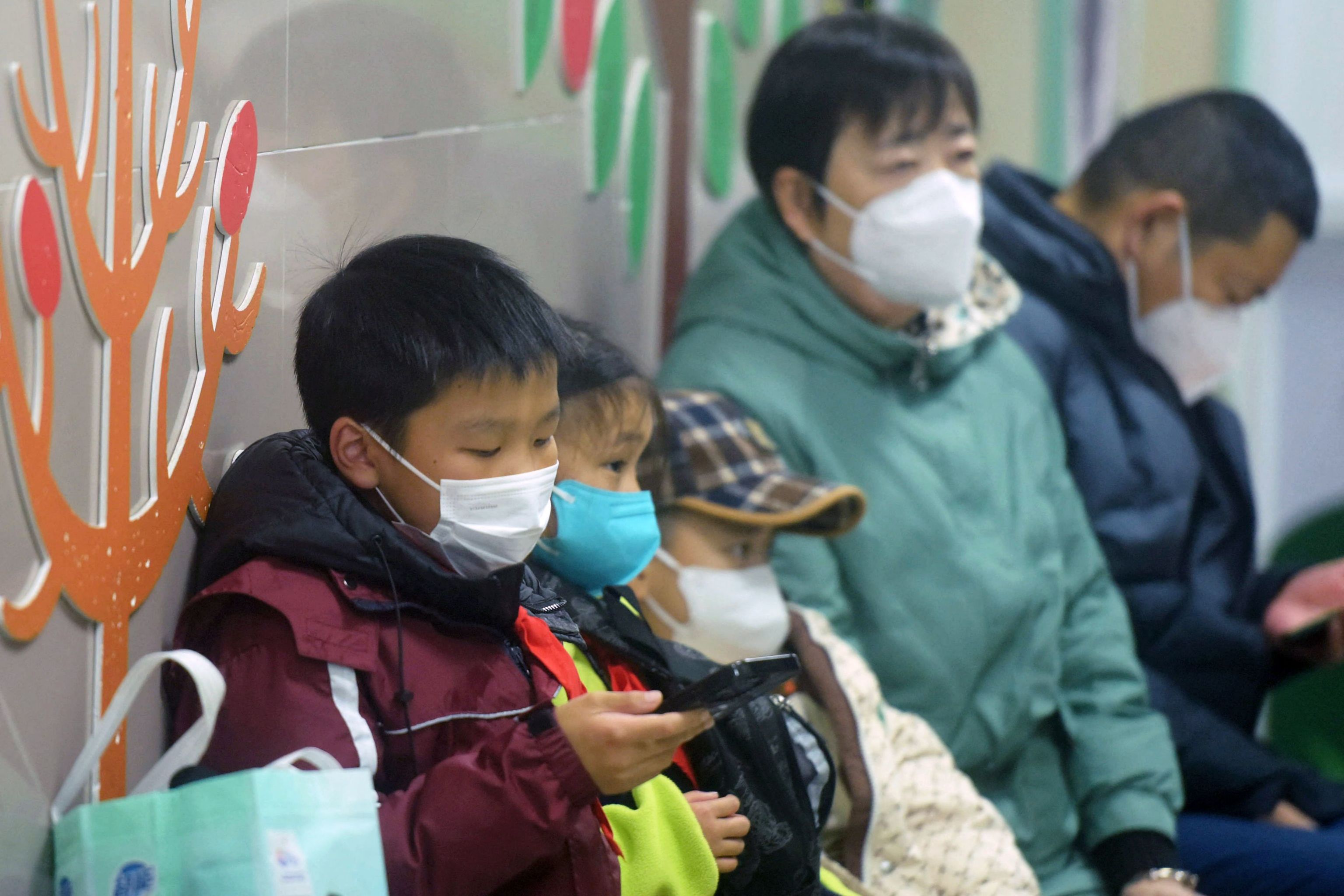China has done it again. The announcement of an increase in cases of human metapneumovirus (HMPV) has raised alarms, more due to coinciding with the surge in coronavirus cases in January 2020 and because the general public was unaware of the existence of this seasonal virus rather than being a new respiratory infection.
"It is not. It usually coexists with other seasonal viruses like the flu and RSV (respiratory syncytial virus), and in recent years, with covid," says María del Mar Tomás, a microbiologist at the University Hospital of La Coruña and spokesperson for the Spanish Society of Infectious Diseases and Clinical Microbiology (Seimc).
Currently, the World Health Organization (WHO) has not issued any health alert or warning regarding this virus. The Centers for Disease Control and Prevention (CDC) in the United States point out that a broader use of molecular diagnostic tests has increased the identification and knowledge of HMPV as a significant cause of upper and lower respiratory tract infections.
Why Have Alarms Been Raised with This Virus in China?
The Chinese Center for Disease Control and Prevention announced last Friday that they were testing a monitoring system for pneumonia of unknown origin, and it is expected that cases of some respiratory diseases will increase during the winter, as reported by Reuters.
The disease control authority's measures aim to help authorities establish protocols for handling unknown pathogens, contrasting with the lower level of preparedness five years ago when the new coronavirus causing covid-19 first emerged.
Other Respiratory Diseases
Erasing the Bronchiolitis Virus: "The immunized or uninfected by the pathogen or if they do, it is mild"
The Avian Influenza Virus Mutates in a Patient: Easier to Infect Humans
In a press conference in late December, Kan Biao, a CDC official, stated that China is likely to be affected by various infectious respiratory diseases in winter and spring. Without providing further details, he commented that the total number of cases this year will be lower than last year.
Recently detected cases include pathogens such as rhinovirus and human metapneumovirus. The number of infections of the latter, especially in individuals under 14 years old, is on the rise, particularly in northern provinces.
Infections have also been reported in India. The Ministry of Health and Family Welfare of the country has stated that there is "no cause for concern" regarding the detection of three cases of human metapneumovirus (HMPV) and that there has been no unusual increase in respiratory disease cases.
Who is Human Metapneumovirus (HMPV)?
As Tomás explains, it is a seasonal pathogen. "It is an RNA virus of the Paramyxoviridae family, Metapneumovirus genus. This family also includes the respiratory syncytial virus (RSV) that we are more familiar with."
The circulation pattern of HMPV is during the winter months "from January to March, especially in the northern hemisphere, and in June and July in the southern hemisphere," notes the microbiologist. "This leads to a significant increase in cases during these months," she adds. As Tomás points out, this is not a new virus, "as it has been circulating among humans for over 50 years." The first case was detected in the Netherlands in 2001.
Who is More Susceptible to Contracting HMPV?
This pathogen is responsible for respiratory infections in patients at the extremes of life: those over 65 years old and children up to 14 years old, especially infants. Special attention should also be paid to immunocompromised individuals.
What Symptoms Does a Person with Human Metapneumovirus Have?
HMPV is transmitted from person to person or through surfaces. "It causes upper respiratory tract involvement with fever, sore throat, cough, nasal congestion, and difficulty breathing," says the expert.
Tomás warns that, while most cases are mild, "it can lead to complications," especially in the most vulnerable groups: children under five years old, immunocompromised individuals, and very elderly patients with comorbidities (other chronic respiratory or cardiovascular diseases that may be "decompensated" or altered by the presence of an infection).
The clinical symptoms of HMPV infection can progress to bronchitis or pneumonia and are similar to those of other viruses causing upper and lower respiratory tract infections.
The estimated incubation period is three to six days, and the average duration of the illness may vary depending on severity but is similar to other respiratory infections caused by viruses.
How is an HMPV Infection Diagnosed?
"In hospital diagnostic services, it is done by exclusion, once it has been confirmed that the patient does not have other viruses, such as the flu, covid, and RSV," explains Tomás.
Generally, it is included in the package of seasonal viruses and specific detection is not usually performed. Its circulation
How is a Respiratory Infection by Human Metapneumovirus (HMPV) Treated?
Symptoms are addressed, not the infection itself because there is no specific treatment.
Can Immunity be Developed Against HMPV?
It is estimated that globally "around 90% of children around five years old have had contact or been infected with HMPV. And between 3-10% of children under five years old may have been hospitalized due to this cause of lower respiratory tract infection." This is due to the pathogen's complications in the form of bronchiolitis or asthma.
How Can Contagion and Infection by this Pathogen be Prevented?
It is most likely that HMPV is transmitted from an infected person to others through cough and sneeze secretions by close personal contact, such as touching or shaking hands, touching objects or surfaces with the virus, and then touching the mouth, nose, or eyes.
The microbiologist emphasizes that preventive measures are the same as for any respiratory infection, "we already know them (or should). There is no vaccine or specific treatment." Tomás recalls these defensive measures: avoiding transmission chains, frequent handwashing, using masks if symptomatic, limiting contacts, especially with high-risk groups for complications.
